Description
A Selection of Beauty from the Pleasure Quarters by Chōbunsai Eishi printed on a Sweatshirt
The high-ranking courtesan Takigawa self-consciously adjusts her hair and clothing in preparation for receiving a customer. Her gorgeous garments are of the variety that a contemporary popular writer had in mind when describing high-class courtesans wearing “undergarments of white damask and two robes: an under-robe of scarlet and white kanoko shibori [“fawn spots”] and the outer one of pale . . . silk, dyed and embroidered.” Chōbunsai Eishi adds a dark obi sash that dramatically contrasts with the delicate blue-and-purple robe. The sparkling mica background completes the air of sumptuousness. Eishi’s prints, characterized by elegant, elongated figures and meticulous draftsmanship, evoke his artistic training by Kano-school painters.
About the Sweatshirt
Regular fit
Standard length, the fabric easily gives into movement
Comfortable
The fabric and fit of this item are extra comfy
Tear-away tag
Easily removable tear-away tag that allows you to add a custom inside label
This Unisex Premium Sweatshirt has a classic crew neck, flattering unisex fit, and soft 100% cotton exterior.
- 100% cotton face
- 65% cotton, 35% polyester
- Charcoal Heather is 55% cotton, 45% polyester
- Fabric weight: 8.5 oz./yd.² (288.2 g/m²)
- Tightly knit 3-end fleece
- Side-seamed construction
- Self-fabric patch on the back
- Double-needle stitched rib collar, cuffs, and hem
- Tear-away label
Chōbunsai Eishi (1756-1829)
Chōbunsai Eishi was a Japanese ukiyo-e artist. His last name was Hosoda (細田). His first name was Tokitomi (時富). His common name was Taminosuke (民之丞) and later Yasaburo (弥三郎). Pupil of Kano Eisen’in Michinobu (狩野 栄川院 典信). Born as the first son of direct vassal of the Shogunate, a well-off samurai family that was part of the Fujiwara clan. Eishi was a vassal of the Shogunate with a generous stipend of 500 ‘koku’ (90,000 litres) of rice.
Eishi left his employ with the Shōgun Ieharu to pursue art. His early works were prints, mostly Bijin-ga portraits of tall, thin, graceful beauties in the original style established by himself akin to Kiyonaga and Utamaro. He established his own school and was a rival to Utamaro. He was a prolific painter, and from 1801 gave up print designing to devote himself to painting.

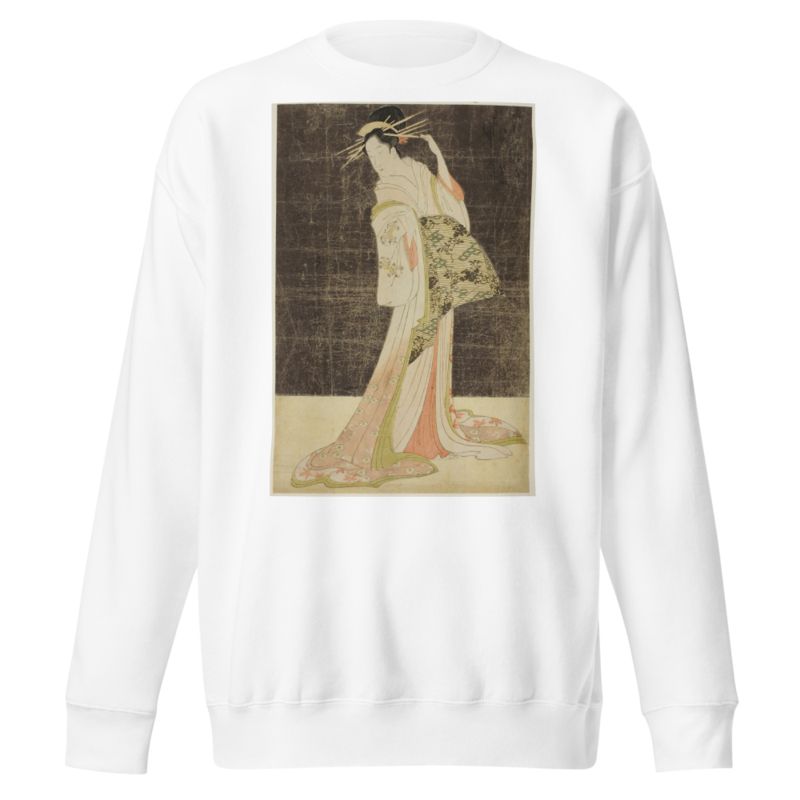
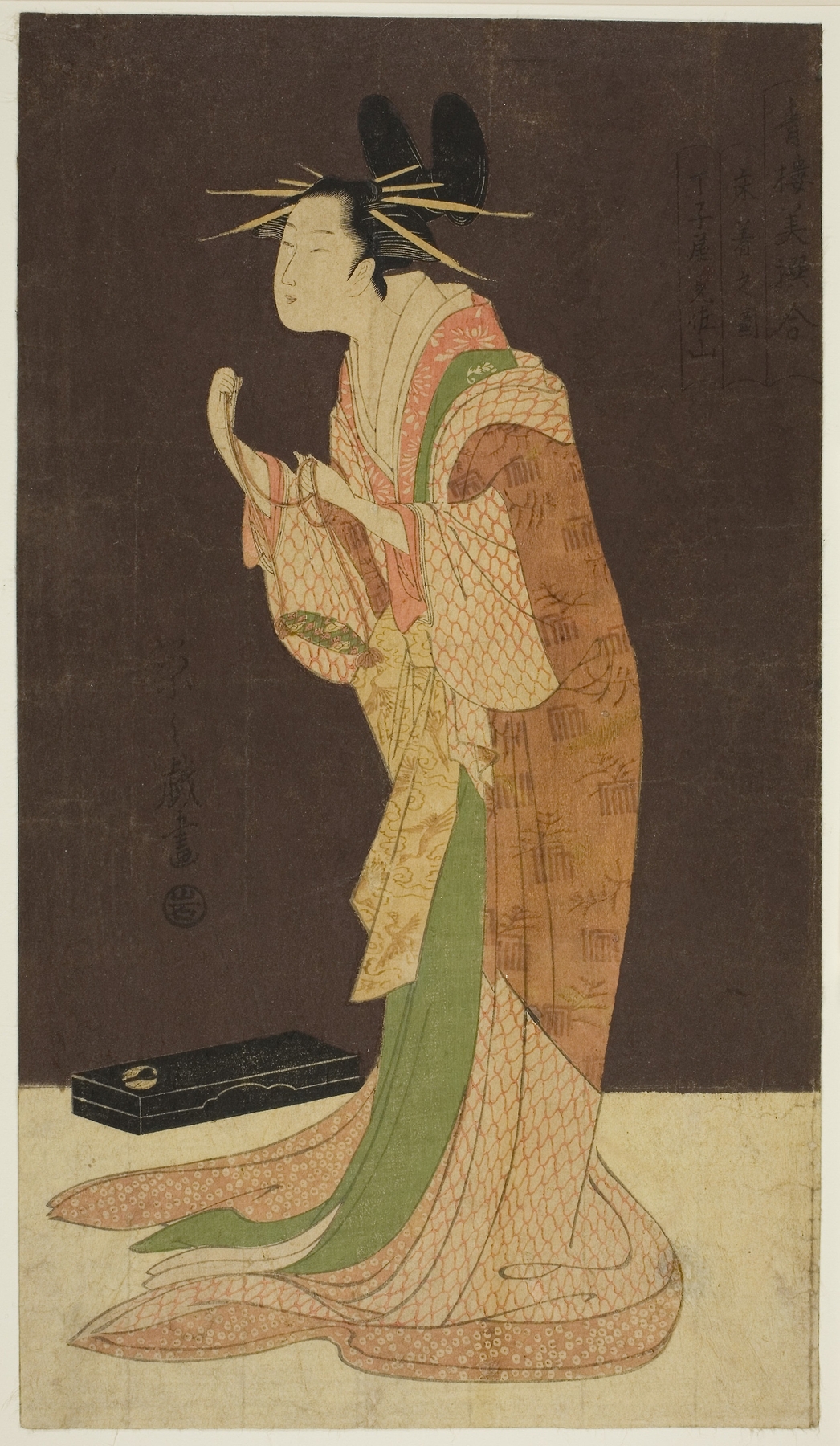
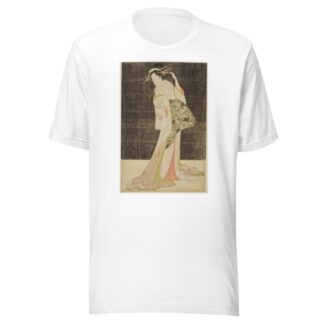
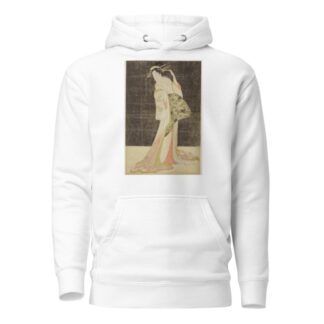
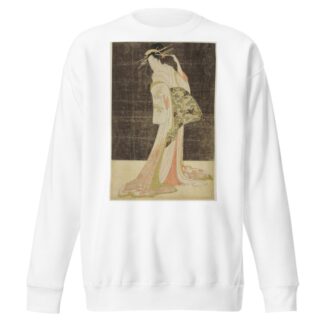
Reviews
There are no reviews yet.